ประวัติ

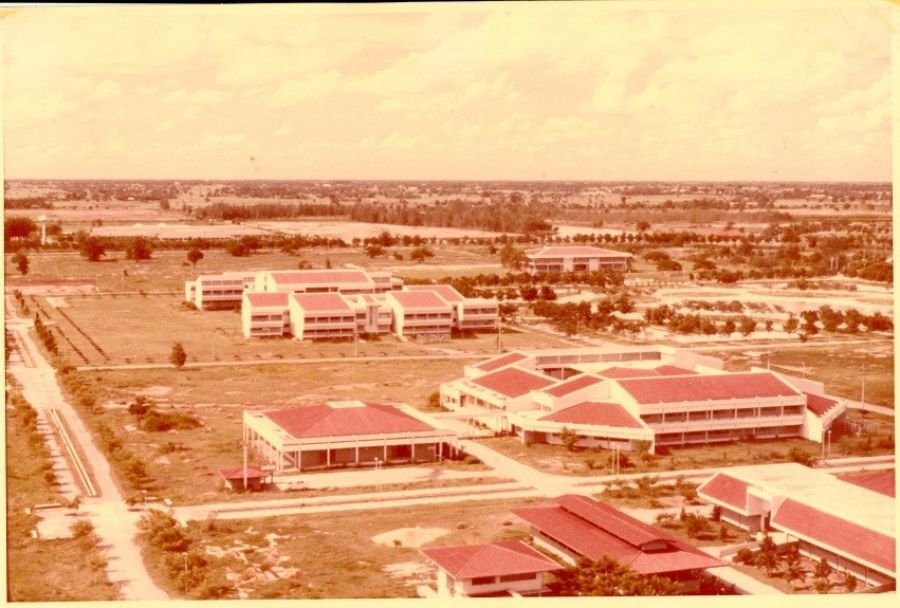
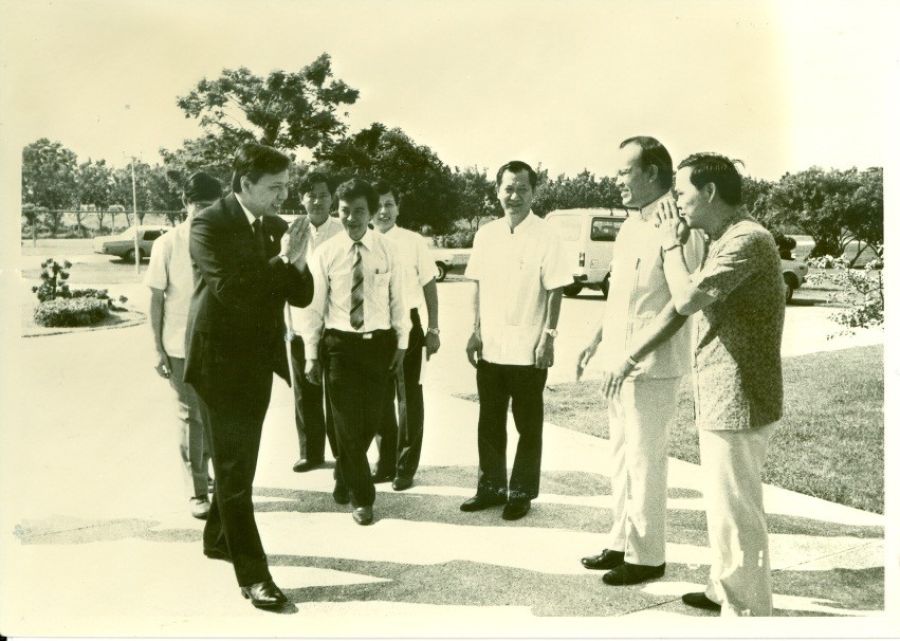
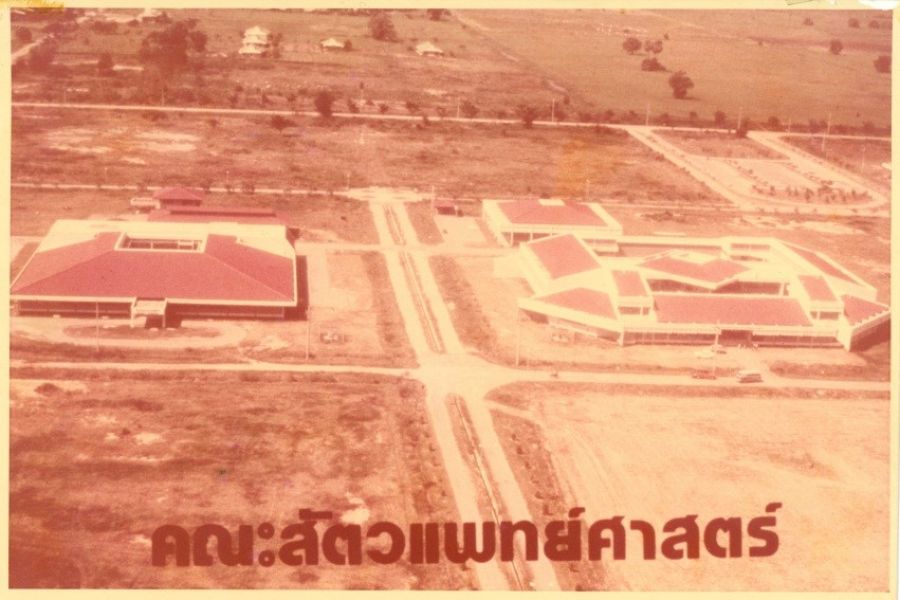
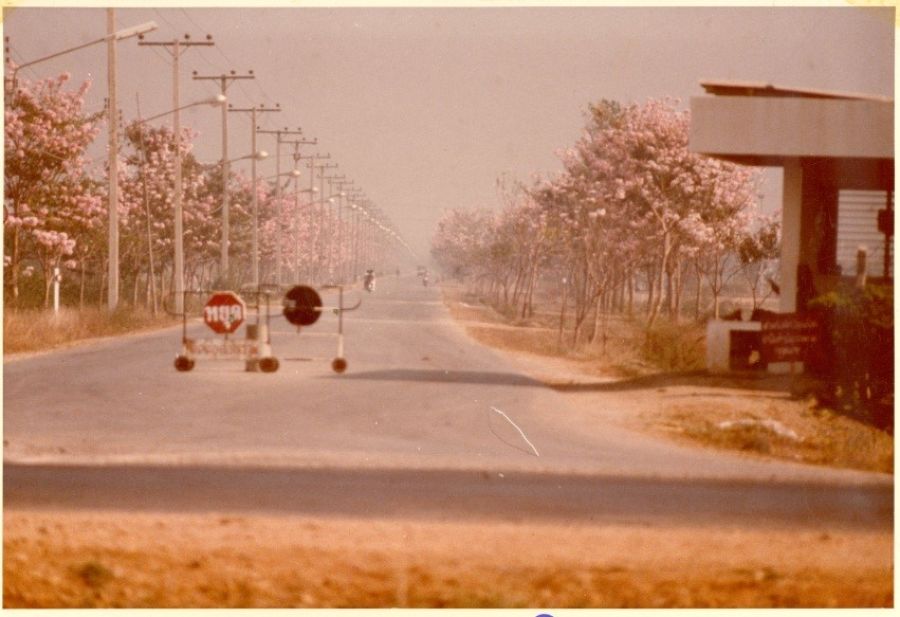
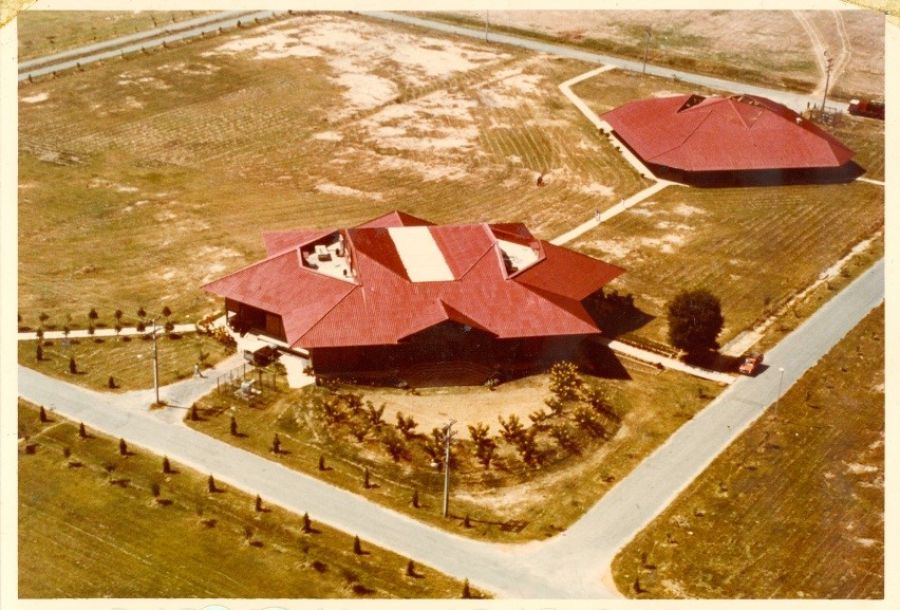

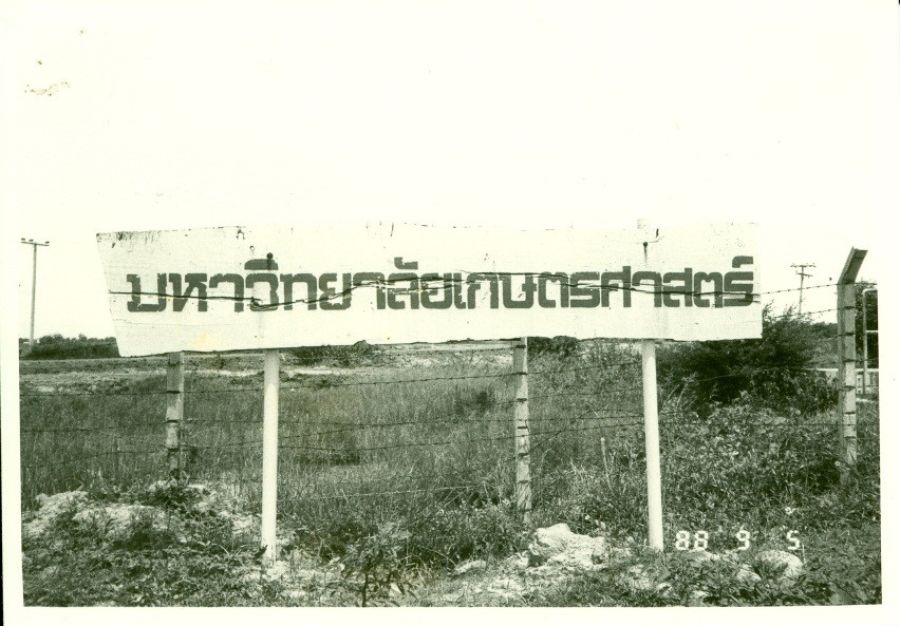
มหาวิทยาลัยเกษตรศาสตร์ เป็นสถาบันการศึกษาที่เปิดสอนหลักสูตรทางการเกษตรแห่งแรก ของประเทศไทย ถือกำเนิดมาจากโรงเรียนฝึกหัดครูประถมกสิกรรม เมื่อ พ.ศ. 2460 ซึ่งมีการขยาย และยกฐานะขึ้นเป็นมหาวิทยาลัยเกษตรศาสตร์ เมื่อวันที่ 2 กุมภาพันธ์ พ.ศ. 2486 โดยมีตราประจำมหาวิทยาลัยเป็นรูปพระพิรุณทรงนาค ล้อมรอบด้วยกลีบบัวคว่ำ บัวหงาย ในวงกลม สีประจำมหาวิทยาลัย คือ สีเขียวใบไม้ และ มีต้นนนทรีเป็นต้นไม้ประจำมหาวิทยาลัย ต่อมาพื้นที่มหาวิทยาลัยเกษตรศาสตร์ สำหรับ การเรียนการสอน การวิจัยทางการเกษตรไม่เพียงพอต่อการพัฒนามหาวิทยาลัย จึงจัดทำแผนและโครงการขยายกิจการต่าง ๆ ในด้านสาขาวิชาเกษตรไปดำเนินการ ณ สถานที่ที่เหมาะสมแห่งใหม่ เพื่อตอบสนองนโยบายของรัฐบาล ในด้านการพัฒนาการเกษตรของประเทศตามแผนพัฒนาเศรษฐกิจและสังคมแห่งชาติ ด้วยเหตุที่กิจการด้านการเรียนการสอนจำเป็นต้องดำเนินการไปพร้อมๆกันกับการวิจัยและการบริการวิชาการแก่สังคม จึงจะบังเกิดประโยชน์สูงสุดต่อประเทศชาติ มหาวิทยาลัยเกษตรศาสตร์ได้ดำเนินการขอความช่วยเหลือจากรัฐบาลญี่ปุ่น เพื่อสร้างความพร้อม ด้านอาคารสถานที่ ครุภัณฑ์ อุปกรณ์ และสิ่งอำนวยความสะดวกต่างๆ สำหรับงานวิจัยและงานบริการวิชาการที่วิทยาเขตกำแพงแสน ในปี พ.ศ. 2525 รัฐบาลญี่ปุ่นได้จัดเงินช่วยเหลือในรูปให้เปล่าเพื่อการนี้ให้แก่มหาวิทยาลัย จำนวน 4,100 ล้านเยน(ประมาณ 410 ล้านบาทในขณะนั้น) เพื่อก่อสร้างศูนย์ปฏิบัติการวิจัยและเรือนปลูกพืชทดลอง ศูนย์เครื่องจักรกลการเกษตรแห่งชาติ และศูนย์ส่งเสริมและฝึกอบรมการเกษตรแห่งชาติ รวมทั้งงบประมาณสำหรับจัดหาครุภัณฑ์และเครื่องจักรกลการเกษตรที่จำเป็นในการปฏิบัติงาน เป็นเงิน 500 ล้านเยน (ประมาณ 50 ล้านบาท) รวมทั้งสิ้น 4,600 ล้านเยน (ประมาณ 460 ล้านบาท) สำหรับการเรียนการสอนที่วิทยาเขตกำแพงแสน เริ่มขึ้นเมื่อวันที่ 12 พฤศจิกายน พ.ศ. 2522 ซึ่งเป็นวันเปิดเรียนภาคปลาย ปีการศึกษา 2522 โดยมีหน่วยงานที่ทำหน้าที่จัดการเรียนการสอนประกอบด้วย 4 คณะ คือ คณะเกษตร คณะวิศวกรรมศาสตร์ คณะสัตวแพทยศาสตร์ และ คณะศึกษาศาสตร์ ปัจจุบันมหาวิทยาลัยเกษตรศาสตร์ วิทยาเขตกำแพงแสน เปิดการเรียนการสอนมาเป็นเวลา 36 ปี มีคณะเพิ่มขึ้นเป็นจำนวน 8 คณะ คือ คณะเกษตร กำแพงแสน คณะวิศวกรรมศาสตร์ กำแพงแสน คณะวิทยาศาสตร์การกีฬา คณะศิลปะศาสตร์และวิทยาศาสตร์ คณะศึกษาศาสตร์และพัฒนศาสตร์ คณะสัตวแพทยศาสตร์ คณะประมง และ บัณฑิตวิทยาลัย และยังมีสถาบันและสำนักอื่นๆ ที่ให้การสนับสนุน ภาระหน้าที่หลักของวิทยาเขต ทั้งด้านการเรียน การสอน การวิจัย การบริการทางวิชาการและทำนุบำรุงศิลปวัฒนธรรม
ด้วยเหตุที่กิจการด้านการเรียนการสอนจำเป็นต้องดำเนินการไปพร้อมๆกันกับการวิจัยและการบริการวิชาการแก่สังคม จึงจะบังเกิดประโยชน์สูงสุดต่อประเทศชาติ มหาวิทยาลัยเกษตรศาสตร์ได้ดำเนินการขอความช่วยเหลือจากรัฐบาลญี่ปุ่น เพื่อสร้างความพร้อม ด้านอาคารสถานที่ ครุภัณฑ์ อุปกรณ์ และสิ่งอำนวยความสะดวกต่าง ๆ สำหรับงานวิจัยและงานบริการวิชาการที่วิทยาเขตกำแพงแสน ในปีพ.ศ.2525 รัฐบาลญี่ปุ่นได้จัดเงินช่วยเหลือในรูปให้เปล่าเพื่อการนี้ให้แก่มหาวิทยาลัย จำนวน 4,100 ล้านเยน(ประมาณ 410 ล้านบาทในขณะนั้น) เพื่อก่อสร้างศูนย์ปฏิบัติการวิจัยและเรือนปลูกพืชทดลอง ศูนย์เครื่องจักรกลการเกษตรแห่งชาติ และศูนย์ส่งเสริมและฝึกอบรมการเกษตรแห่งชาติ รวมทั้งงบประมาณสำหรับจัดหาครุภัณฑ์และเครื่องจักรกลการเกษตรที่จำเป็นในการปฏิบัติงาน เป็นเงิน 500 ล้านเยน (ประมาณ 50 ล้านบาท) รวมทั้งสิ้น4,600 ล้านเยน (ประมาณ 460 ล้านบาท) สำหรับการเรียนการสอนที่วิทยาเขตกำแพงแสน เริ่มขึ้นเมื่อวันที่ 12 พฤศจิกายน พ.ศ.2522 ซึ่งเป็นวันเปิดเรียนภาคปลาย ปีการศึกษา 2522 โดยมีหน่วยงานที่ทำหน้าที่จัดการเรียนการสอนประกอบด้วย 4 คณะ คือ คณะเกษตร คณะวิศวกรรมศาสตร์ คณะสัตวแพทยศาสตร์ และ คณะศึกษาศาสตร์ ปัจจุบันมหาวิทยาลัยเกษตรศาสตร์ วิทยาเขตกำแพงแสน เปิดการเรียนการสอนมาเป็นเวลา 36 ปี มีคณะเพิ่มขึ้นเป็นจำนวน 8 คณะ คือ คณะเกษตร กำแพงแสน คณะวิศวกรรมศาสตร์ กำแพงแสน คณะวิทยาศาสตร์การกีฬา คณะศิลปะศาสตร์และวิทยาศาสตร์ คณะศึกษาศาสตร์และพัฒนศาสตร์ คณะสัตวแพทยศาสตร์ คณะประมง และ บัณฑิตวิทยาลัย และยังมีสถาบันและสำนักอื่น ๆ ที่ให้การสนับสนุน ภาระหน้าที่หลักของวิทยาเขต ทั้งด้านการเรียน การสอน การวิจัย การบริการทางวิชาการและทำนุบำรุงศิลปวัฒนธรรม
KU is the first educational institute of agriculture in Thailand. It originated from the training school of agricultural primary teacher founded in 1917, which had been expanded since then and was later officially promoted as Kasetsart University on February 2nd, 1943 with the university emblem of Phra Pirun Song Naga (a God of Rain on the Naga Serpent’s back) surrounded by an alternatively upside down and overturning lotus floral leaves in a circle. KU’s color and tree are leaf-like green and Nonsee (copperpod, yellow-flamboyant, yellow flametree, yellow poinciana or yellow-flame--Peltophorum pterocarpum) tree. Later, KU’s area for agricultural teaching and research was not enough for university development ; therefore, extension plans and projects to move to another appropriate location were started to design and carry out. These were also in response to the government policy of agricultural development of the country and in line with the National Economic and Social Development Plan. One of the most important changes which took place in KU and as part of the university's progress and expansion was the establishment of an additional campus in the sub-district of Kamphaeng Saen (formerly Thung Kraphang Hoam), Kamphaeng Saen district, Nakhon Pathom province in response to the government policy of agricultural development of the country and in line with the 1st National Economic and Social Development Plan (1961 1966). This plan had been prepared since 1960 during the administration by Professor Insee Chandrasathit, the then KU President in order to educationally produce more quality graduates in agriculture and related fields and it was extended by the next KU President, Mom Luang Chuchart Kambhu. Thus, a plot of land in Kamphaeng Saen district, Nakhon Pathom province was acquired and provided for firstly founding a training station run by Department of Animal Husbandry for farm practice of students in Faculty of Agriculture. Efforts to develop the university continued; a master plan for KU development during B.E. 2511 – 2517 was designed and carried out with assistance from Rockefeller Foundation. After the application for the loan in detail had been passed in December B.E. 2514, an agreement in the loan for the KU development plan was signed by both the Thai government and the World Bank on May 24th, B.E. 2515. According to the World Bank loan in details, the development projects were scheduled to be implemented in 20 years and divided into 4 phases of 5 years each. On January 20th, 1976, Professor Dr. Watthana Sathiansawat was appointed as the 1st vice-president for KU, Kamphaeng Saen campus(KU. KPS).
Since KU teaching and learning activities were needed to be carried out simultaneously with research and academic service to society so as to be most beneficial to the nation, KU requested assistance from the Japanese government to build up preparation in terms of facilities, hardware and equipments for research and academic services at KU. KPS. As a result, the Japanese government provided KU with grant aid of 4,100 million yen(then bht. 410 million) to construct the Laboratory Center and the Greenhouse Complex, Agricultural Machinery National Center, and Agricultural Extension and Training Center, including 500 million yen(then bht. 50 million) for hardware acquisition for the Agricultural Machinery National Center. Teaching and learning at KU. KPS began on November 12, 1979, which was the start of the 2nd semester of the academic year 1979. Then there were 4 teaching faculties: Faculty of Agriculture, Faculty of Engineering, Faculty of Veterinary Medicine and Faculty of Education. Currently KU. KPS has been teaching for over 37 years and there are 8 faculties: Faculty of Agriculture at Kamphaengsaen, Faculty of Engineering at Kamphaengsaen, Faculty of Sports Science, Faculty of Arts and Science, Faculty of Education and Development Science, Faculty of Veterinary Medicine, Faculty of Fisheries and Graduate School, in addition there are other related institutions and agencies to KU.KPS main missions of teaching, research, academic services and cultural preservation.
